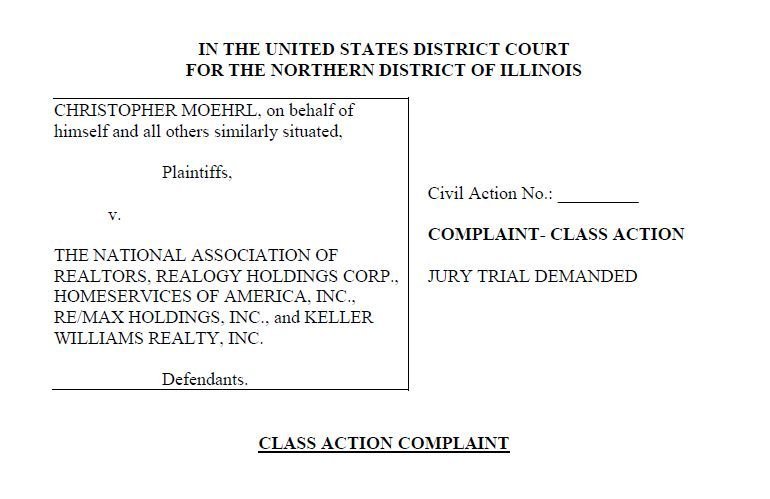BioVie Class Action Lawsuit Unveiled: Your Legal Resource
Wiki Article
Exploring Class Action Lawsuits: What You Need to Know
Class action legal actions have actually come to be increasingly prevalent in today's legal landscape, with individuals signing up with pressures to prosecute versus companies and companies. In this conversation, we will check out the ins and outs of class action lawsuits, shedding light on their definition, the requirements for filing, and the prospective benefits and drawbacks involved. We will certainly delve right into the actions included in a class activity suit and take a look at some current site situations that have formed this area of law. Recognizing the complexities and nuances of course action legal actions is important for anybody looking for justice in a collective manner, so allow's begin our exploration with each other.The Definition of Class Activity Suits
Just what is the meaning of a class action legal action? A class activity suit is a lawful action filed by a team of people who have comparable claims against an offender. It allows a big number of individuals, referred to as the course participants, to join together and seek their cases collectively, instead of each specific declaring a separate claim. When the number of possible complainants is too large for individual legal actions to be practical, Class action suits are normally brought. They are commonly utilized in cases involving consumer protection, product liability, safeties fraudulence, and work concerns.One of the crucial elements of a course activity legal action is that the lead complainant, additionally called the class representative, represents the interests of all the class participants. The court designates the lead plaintiff based on their ability to fairly and effectively represent the class. The lead complainant functions very closely with the course action attorney to seek and construct a solid situation compensation or various other treatments in support of the whole class.
In order for a course action suit to proceed, the court should certify the course. This indicates that the court identifies that the lawsuit fulfills specific requirements, such as numerosity (a large sufficient number of course members), commonness (common questions of regulation or truth), typicality (the cases of the lead plaintiff are typical of the course), and adequacy of representation (the lead plaintiff and course advice can standing for the class's passions) When the class is accredited, the lawsuit can progress, and any type of judgment or settlement got to will put on all course participants unless they select to opt-out.
Course action legal actions serve a vital objective in offering accessibility to justice for individuals that may not have the sources to pursue their insurance claims individually. They likewise advertise effectiveness in the lawful system by consolidating comparable claims into a solitary activity, reducing the problem on both the court and the events involved.
Demands for Submitting a Class Activity Lawsuit

One more demand is that the class needs to be completely numerous. The exact number of course participants called for might differ depending upon the jurisdiction and the nature of the instance. It is typically expected that the class should be large sufficient that signing up with all the private plaintiffs into a solitary lawsuit is extra reliable than having several separate suits.
Additionally, it is important that the class rep, that is the private or entity bringing the claim in support of the class, has regular cases and defenses to those of the class participants. The agent should also have the ability to adequately and rather represent the interests of the whole course.

Advantages and Disadvantages of Class Action Suits
Class activity claims provide both benefits and downsides for plaintiffs and offenders entailed in the legal process. On the one hand, among the considerable advantages of course action lawsuits is that they give a reliable and economical way for people with similar claims to seek justice collectively. By settling many similar situations into one lawsuit, course actions simplify the legal process and save time and sources for both accuseds and plaintiffs.Another advantage of class action legal actions is that they allow people with minimal sources to seek payment for their problems. In cases where the prospective recuperation is small, private lawsuits may not be economically sensible. However, by signing up with pressures in a course action, plaintiffs can merge their sources and increase their possibilities of acquiring a reasonable resolution.
Furthermore, class actions can advertise social adjustment by holding corporations liable for their activities. By accentuating widespread misbehavior or faulty items, class actions can press business to change their methods, enhance product safety, or execute reforms.
However, course actions likewise have disadvantages. One possible downside is that specific complainants might have restricted control over the lawsuits procedure and the supreme result of the situation. The lead complainants and their attorneys commonly make vital choices in behalf of the entire class, which might not constantly line up with the private rate of interests of each class member.
Furthermore, class actions can be time-consuming and extensive, usually taking years to get to a resolution. The intricacy and dimension of these suits can lead to delays and long term lawsuits, which can be irritating for both defendants and complainants seeking a timely resolution.
Actions Associated With a Class Action Legal Action
The process of a course action suit usually begins with the recognition of a potential course and the filing of a complaint. As soon as a group of individuals that share similar cases against an offender is recognized, the lead complainant, or class representative, submits a grievance in behalf of the entire course. This complaint outlines the claimed misdeed and looks for damages or various other relief for all members of the class.After the grievance is filed, the court will determine whether the case fulfills the requirements for course accreditation. These needs usually consist of numerosity (a large adequate course), commonality (comparable legal insurance claims), typicality (the lead complainant's claims are depictive of the course), and adequacy of depiction (the lead complainant and their attorney can appropriately represent the class's passions)
If the court licenses the class, notification is offered to all click to investigate prospective course participants, giving them the chance webpage to opt-out if they desire to pursue their own private cases - BioVie class action lawsuit. If an enough variety of course members stay, the situation will certainly continue to the exploration stage, where both sides collect proof and details relevant to the claims
Complying with discovery, the celebrations might involve in negotiation arrangements or proceed to trial. If the case goes to trial and the class prevails, the court will figure out the proper problems or alleviation to be granted to the class members.
Recent Site Course Activity Claims
With a strong understanding of the steps associated with a class action suit, it is now essential to analyze some recent landmark cases that have read actually made a significant effect in the legal landscape. Future FinTech class action lawsuit. These situations have not only shaped the means course activity lawsuits are performed yet have additionally caused adjustments in different marketsOne such site instance is the Volkswagen discharges detraction, which led to the biggest class action negotiation in automobile background. This deception affected millions of customers worldwide, leading to a class activity suit.
One more significant case is the Johnson & Johnson talcum powder claim. Thousands of females submitted suits against the firm, asserting that their talcum powder products created ovarian cancer cells.
These recent site situations show the power of course activity suits in holding firms responsible for their actions and seeking justice for afflicted people. They offer as instances of exactly how course activity legal actions can produce significant changes and safeguard the civil liberties of consumers.
Conclusion
In conclusion, course activity suits are a legal mechanism that allows a team of individuals to collectively look for justice for a typical grievance. Understanding the requirements and actions entailed in submitting a class activity legal action is crucial for people seeking to pursue this lawful avenue.One of the vital aspects of a class action legal action is that the lead plaintiff, also understood as the class rep, represents the interests of all the course members.In order for a course action lawsuit to continue, the court must accredit the class. This means that the court identifies that the suit fulfills specific needs, such as numerosity (a big adequate number of class participants), commonality (usual questions of regulation or fact), typicality (the cases of the lead plaintiff are typical of the course), and competence of representation (the lead complainant and class advice are qualified of representing the course's rate of interests) As soon as the class is accredited, the lawsuit can move onward, and any kind of judgment or negotiation reached will use to all course members unless they select to opt-out.
The procedure of a course activity suit typically begins with the recognition of a possible class and the filing of a problem.
Report this wiki page